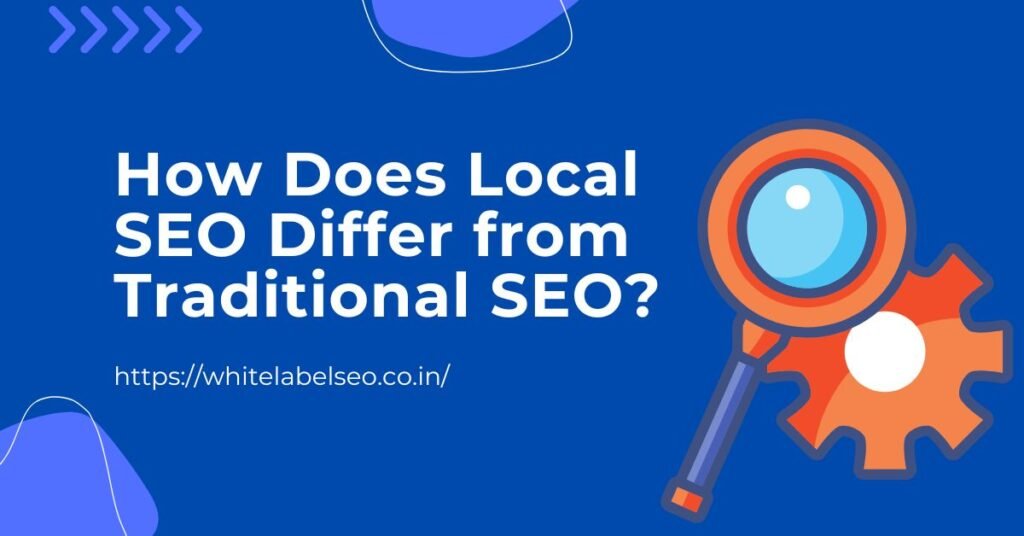Why showing up for “near me” searches can bring customers to your door today.
Picture someone standing a few streets from your shop with a phone in hand. They type “best coffee near me,” see a map with three options, tap “Call,” and arrive within minutes.
That is Local SEO at work fast, action-focused, and close to where the searcher stands. Traditional SEO is different. It helps people anywhere learn from your content, compare choices, and discover your brand over time.
Both matter, but they serve different needs. If you want quick calls and visits, Local SEO leads the way.
If you want broad reach and long-term authority, Traditional SEO builds that foundation. The smartest plan blends the two.
What Is Local SEO vs. Traditional SEO?
The core goal is the same, but the focus is different
Local SEO and Traditional SEO share one aim: help people find and choose your business. The focus, though, changes with the searcher’s situation.
When someone needs a nearby solution like “dentist open now” or “plumber near me” Local SEO matters most. When someone wants knowledge like “how to choose braces” or “what causes a leaking pipe”.
Traditional SEO guides them with clear, useful content, and partnering with a white label SEO company can help implement both effectively.
Local intent vs. general intent explained
Local intent means the person wants a nearby option they can call, visit, or book. Their priority is speed and convenience.
General intent means they’re learning, comparing, or researching without caring about location.
Local intent often triggers map results and quick actions. General intent often triggers standard listings with guides, how-tos, and comparisons.
How Search Results Differ (Map Pack vs. Standard Listings)
The Map Pack and why it matters
For many local searches, Google shows a map and three highlighted businesses. Each entry includes ratings, hours, and buttons for “Call,” “Website,” or “Directions.”
Earning a spot here can drive same-day visits and phone enquiries. Your Google Business Profile (GBP), your reviews, and how close you are to the searcher all influence this area.
Because the Map Pack is compact and action-oriented, small improvements to your profile can lead to real-world results.
Local organic results and regular organic results
Below the Map Pack, you’ll find local organic results standard webpage listings that still respond to a local query.
Strong location pages, clear contact details, and focused service content perform well here. For non-local topics, you’ll see regular organic results without a map.
These reward in-depth, helpful pages that match what people want to learn, regardless of where they are.
Signals Google Uses More Heavily for Local SEO
Proximity, relevance, and prominence
Three ideas drive much of Local SEO:
- Proximity: How close your business is to the searcher.
- Relevance: How well your listing and pages match the search.
- Prominence: How trusted and well-known your business appears online (reviews, mentions, and more).
Traditional SEO also values relevance and trust, but it doesn’t weigh physical distance the same way. Local queries favour businesses that are nearby, accurate, and well-reviewed.
Google Business Profile and Local Citations
Your Google Business Profile is central to Local SEO solutions. Complete it with accurate details name, address, phone, hours, services, and photos and keep them consistent across all directories. Update both your GBP and website if anything changes.
Reviews and Star Ratings
Ask for reviews regularly and respond to them, especially negative ones. Fresh, positive feedback boosts trust and click-through rates from the Map Pack.
Location Pages and NAP Details
Create a page for each area you serve, including services, hours, landmarks, and booking info. Add your name, address, and phone to the footer and contact page.
Internal Linking
Link from your homepage to key services and location pages, and from location pages to bookings, FAQs, and related services for easy navigation.
Content that answers local questions
Think like a neighbour. What would someone nearby ask before calling?
- Do you offer same-day bookings?
- Is there on-site parking?
- Which suburbs do you serve?
- What happens during an emergency visit?
Short, direct answers remove friction and turn readers into callers.

Schema markup for local
Local Business schema helps search engines read your address, hours, and phone more clearly. It won’t replace helpful content, but it supports local details that matter.
For broader topics, Article or FAQ schema can help explain educational pages to search engines in a structured way.
Off-Page Work: Links, Mentions, and Community Signals
Earning local links and mentions
Links still help rankings, but for Local SEO, nearby relevance stands out. You can:
- Sponsor a community event and request a mention with a link.
- Join a local business group and complete your profile thoughtfully.
- Publish checklists or how-tos that local blogs may reference.
In Traditional SEO, many links may come from industry sites across regions. In Local SEO, a smaller number of locally relevant mentions can carry strong value because they show real community presence.
Consistent NAP across directories
Keep your NAP consistent across key directories. If your holiday hours change, update your GBP and your website together.
Small mismatches can confuse customers and reduce trust. A simple spreadsheet makes it easier to track where your details appear and what needs updating.
Technical SEO That Supports Both
Site speed, mobile, and indexation
Fast pages help everyone. Many local searches happen on phones, so clean layouts, compressed images, and quick load times are vital.
Make sure important pages can be crawled and indexed, fix broken links, and avoid heavy pop-ups that block mobile users.
These steps support both Local and Traditional SEO by improving access and comfort.
Internal links that guide users
Internal links are signposts. On local pages, point clearly to directions, booking, and core services.
On broader guides, lead readers to related posts, comparison pages, and contact options. Good linking shortens the path from interest to action and helps search engines map your site.
Measuring Success: Local KPIs vs. Traditional KPIs
Calls, directions, and store visits
For Local SEO, focus on actions that happen soon after a search: calls from your GBP, direction requests, click-to-call taps, bookings from location pages, and patterns in foot traffic if you track them. If these rise after you improve your map presence or reviews, your local work is paying off.
Rankings, traffic, and conversions
For Traditional SEO, track rankings for important topics, organic traffic to guides and service pages, and conversions like enquiry forms or online purchases.
These show whether your content answers questions well and builds trust at scale.
Supporting Details: Examples and simple “stats” style context
Urgent need (Local SEO shines): A family with a burst pipe searches “emergency plumber near me” late at night. A business with strong reviews, clear hours, and a quick call button gets the job.
Learning moment (Traditional SEO shines): A student searches “beginner guitar chords” and finds clear guides and videos from anywhere. Location is irrelevant quality content wins.
Service-area business (Local + Traditional together): A cleaning company builds targeted location pages and publishes general guides like “how to prepare for deep cleaning.” Location pages win local searches, while guides attract broader traffic.
Simple context: Many daily searches have local intent. On phones, people often want to call, book, or get directions immediately making accurate profiles and strong reviews vital.
Where Local SEO Services Fit In (and When to Use Them)
Where Local SEO Services Fit In: For better map visibility, cleaner listings, and more local calls, these services refine categories, NAP accuracy, reviews, and location pages. For broader reach, traditional SEO builds content, authority, and rankings.
Many blend both Local SEO Services for quick wins, traditional SEO for long-term growth. A partner like White Label SEO can guide this mix effectively.
Action Plan: How to Balance Local and Traditional SEO
Start small and stay steady:
Claim and complete your Google Business Profile. Add categories, hours, services, photos, and short posts for offers or seasonal notes.
Fix NAP consistency. Match name, address, and phone across your site and key directories.
Build or improve location pages. Explain services, hours, parking, nearby landmarks, and how to book.
Ask for reviews each week. Create a polite process and reply to every review.
Strengthen on-page basics. Clear titles, meta descriptions, headings, and short paragraphs help readers and search engines.
Publish one helpful piece each month. Mix local topics with broader guides that answer common questions.
Track the right things. For Local SEO: calls, direction requests, bookings. For Traditional SEO: rankings, organic visits, and enquiries.
Keep technical health solid. Compress images, test mobile speed, and fix broken links.
Earn local mentions. Support a community effort, share a checklist, and complete profiles with care.
Review quarterly. Keep what drives results and drop what doesn’t.
FAQs: Quick Answers Students and Teams Ask
Q1: Can a business rely only on Local SEO?
Yes, if nearby customers are your main audience. Still, a few helpful guides can build trust and answer common questions.
Q2: If I sell nationwide, should I skip Local SEO?
No. Even wide-reach brands gain by building trust where they have offices or showrooms. Use Traditional SEO for education and reach, and Local SEO for fast, nearby actions.
Q3: Do reviews really affect clicks?
Yes. People check ratings and recent comments before calling or visiting. Fresh reviews can lift clicks in the Map Pack.
Q4: How many location pages do I need?
Start with your actual locations or core service areas. Each page should answer real questions for people in that area.
Q5: What’s the fastest Local SEO win?
A complete, accurate Google Business Profile with current hours, a good main category, and fresh photos often produces quick gains.
Conclusion
Local SEO focuses on nearby searchers ready to act, while Traditional SEO builds broader reach through helpful content that answers bigger questions.
Most businesses grow best by combining both: strengthen your Google Business Profile and location pages for quick calls and visits, then publish clear guides to build long-term trust.
If you want a friendly, practical plan that fits how your customers search, reach out to White Label SEO.

